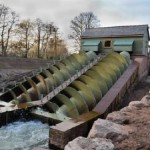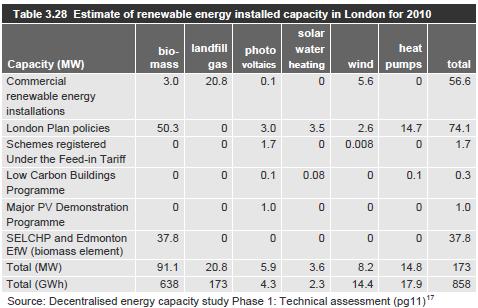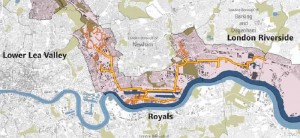Site search:
-
What’s new?
Energy for London Tags
Brent Buildings Camden Carbon Emissions CHP Cities Climate Adaptation Community Heating Community Initiatives Croydon Data DECC Decentralised Energy Distribution ECO Energy Costs Energy Efficiency Enfield FIT Fuel Poverty Funding Green Deal Hackney Haringey Housing Islington Lambeth Library Local Authorities Mayor Newham Ofgem Olympics Photovoltaics Planning RE:FIT RE:NEW Renewable Energy Retrofit Southwark Tower Hamlets Transport Waltham Forest Waste WestminsterEnergy Archives:
- February 2021 (1)
- January 2021 (15)
- December 2020 (15)
- November 2020 (9)
- October 2020 (3)
- August 2020 (5)
- July 2020 (3)
- June 2020 (4)
- April 2020 (10)
- March 2020 (5)
- February 2020 (2)
- January 2020 (3)
- October 2019 (1)
- September 2019 (4)
- August 2019 (2)
- July 2019 (1)
- August 2018 (1)
- November 2016 (8)
- October 2016 (8)
- September 2016 (2)
- August 2016 (8)
- July 2016 (14)
- April 2016 (12)
- March 2016 (16)
- February 2016 (8)
- January 2016 (4)
- December 2015 (1)
- November 2015 (1)
- October 2015 (16)
- September 2015 (3)
- June 2015 (1)
- May 2015 (1)
- April 2015 (1)
- March 2015 (1)
- February 2015 (1)
- January 2015 (1)
- December 2014 (18)
- November 2014 (4)
- August 2014 (8)
- July 2014 (7)
- June 2014 (25)
- May 2014 (8)
- April 2014 (4)
- March 2014 (12)
- February 2014 (7)
- January 2014 (13)
- December 2013 (11)
- November 2013 (15)
- October 2013 (15)
- September 2013 (18)
- August 2013 (5)
- July 2013 (20)
- June 2013 (33)
- May 2013 (8)
- April 2013 (16)
- March 2013 (25)
- February 2013 (14)
- January 2013 (20)
- December 2012 (23)
- November 2012 (23)
- October 2012 (25)
- September 2012 (14)
- July 2012 (12)
- June 2012 (43)
- May 2012 (20)
- April 2012 (8)
- March 2012 (40)
- February 2012 (39)
- January 2012 (40)
- December 2011 (22)
- November 2011 (40)
- October 2011 (33)
- September 2011 (48)
- August 2011 (40)
- July 2011 (58)
- June 2011 (41)
- May 2011 (80)
- April 2011 (38)
- March 2011 (33)
- February 2011 (25)
- January 2011 (24)
- December 2010 (3)
- November 2010 (7)
- October 2010 (6)
- September 2010 (7)
- August 2010 (1)
- July 2010 (2)
- June 2010 (4)
- May 2010 (1)
- March 2010 (3)
- February 2010 (3)
- December 2009 (5)
- November 2009 (2)
- October 2009 (3)
- July 2009 (3)
- June 2009 (1)
- April 2009 (1)
- March 2009 (1)
- February 2009 (1)
- January 2009 (1)
- December 2008 (2)
- October 2008 (1)
- September 2008 (1)
- July 2008 (1)
- March 2008 (2)
- January 2008 (2)
- October 2007 (1)
- September 2007 (3)
- July 2007 (1)
- March 2007 (1)
- February 2007 (3)
- November 2006 (3)
- August 2006 (1)
- February 2006 (1)
- May 2005 (1)
- February 2004 (1)
Tag Archives: Planning
Planning and the Green Deal
June 2012: Thinktank Future of London has added a further helpful contribution to the issue of introducing the Green Deal in London, with a short paper, building on their recent report ‘Delivering Energy Efficiency in London, highlghting how planning will have a role to the success of the Green Deal.
A number of interesting points are raised including:
- There are around 600,000 homes in conservation areas in London, roughly half the national total (reference cited in paper here)- which will potentially be a significant issue for the mass role out of Solid Wall Insulation (SWI) – a key technology promoted by the forthcoming Green Deal and te £1.3 bn Energy Company Obligation (ECO)…
- …and around 60 per cent of all homes in the capital are solid wall
Download the paper ‘The Green Deal in London: Planning Q+A
Posted in Library, News
Tagged Energy Efficiency, Green Deal, insulation, Planning, Solid Wall Insulation
Leave a comment
Mayor to encourage community energy projects
June 2012: The Mayor has published revised ‘early minor alterations to the London Plan’ aimed at ensuring that the London Plan is fully consistent with the Government’s National Planning Policy Framework (published March 2012).
Page 30 of the ‘Early Minor Alterations’ document sets out a proposed revision to Chapter 5 of the London Plan – which addresses planning and climate change – to support community-led initiatives renewable and low carbon projects through neighbourhood planning. The exact amended text (in bold) follows below:
5.41 The Mayor’s supplementary planning guidance will set out broad guidelines to assist boroughs and, where appropriate,neighbourhoods, to define locations where stand-alone renewable energy schemes would be appropriate. The increased use of renewable heat will also significantly depend on the growth of heat networks. The Mayor and Boroughs will also encourage community-led initiatives for renewables and low carbon energy and examine how they can be supported through neighbourhood planning.” [page 30]
The supplementary planning guidance referred to is on renewable energy (which is also referred to in para 5.40 of Chapter 5 – see link above) and has, as yet, not been published by the Mayor. A major renewable energy study for London has however been completed and was issued in January 2012.
Further information to the background on new neighbourhood plans can be viewed here.
Posted in Library, News
Tagged Community Initiatives, Mayor, Planning, Renewable Energy
Leave a comment
How planning works: an introductory guide for councillors
May 2012: Local Government Association (LGA) guide for “new councillors or councillors who are new to planning following the publication of the National Planning Policy Framework. The guide will help councillors understand how planning impacts their ward and how they can use planning to help their communities address local issues.” Download here.
Climate Change Advice to Planners
March 2012: The UK-GBC Green Building Guidance Task Group has created a number of documents to help Local Planning Authorities (LPAs) and the new neighbourhood forums to “understand sustainability issues, to ensure they achieve a balance between requiring robust sustainability standards but also ensuring development remains viable.” Notes produced cover issues on climate change adaptation, climate change mitigation and energy. Download notes from UKGBC website here.
Other useful resources for planners include:
- London Plan Climate Change Mitigation and Climate Change Adaptation policies
- CLG PPS 1 supplement on climate change draft – this was never finalised and has been superseded by the new National Planning Policy Framework (NFFP) – released yesterday – however, it still provides some useful guidance that local authorities may wish to consider when drawing up their own policies.
- TCPA – ‘Planning for Climate Change: guidance and model policies for local authorities‘
- Community energy: urban planning for a low carbon future
- Community energy: planning, development and delivery
New National Policy Planning Framework Launched
March 2012: The Government has released its final version of its National Policy Planning Framework (NPPF) which has gone someway from the initial draft in addressing concerns over the absence of guidance to planning authorities on supporting the development of low carbon and renewable initiatives (as highlighted in an earlier article). The new requirements as set out in the NPPF are welcome – and copied below for information – but are far and away from the detailed guidance that was proposed to be introduced prior to the 2010 election on climate mitigation issues.
National Planning Policy Framework
Included within the 12 ‘core planning principles’ is:
- support the transition to a low carbon future in a changing climate, … encourage the reuse of existing resources, including conversion of existing buildings, and encourage the use of renewable resources (for example, by the development of renewable energy);
93. Planning plays a key role in helping shape places to secure radical reductions in greenhouse gas emissions, minimising vulnerability and providing resilience to the impacts of climate change, and supporting the delivery of renewable and low carbon energy and associated infrastructure. This is central to the economic, social and environmental dimensions of sustainable development.
95. To support the move to a low carbon future, local planning authorities should:
- plan for new development in locations and ways which reduce greenhouse gas emissions;
- actively support energy efficiency improvements to existing buildings; and
- when setting any local requirement for a building’s sustainability, do so in a way consistent with the Government’s zero carbon buildings policy and adopt nationally described standards.
96. In determining planning applications, local planning authorities should expect new development to:
- comply with adopted Local Plan policies on local requirements for decentralised energy supply unless it can be demonstrated by the applicant, having regard to the type of development involved and its design, that this is not feasible or viable; and
- take account of landform, layout, building orientation, massing and landscaping to minimise energy consumption.
97. To help increase the use and supply of renewable and low carbon energy, local planning authorities should recognise the responsibility on all communities to contribute to energy generation from renewable or low carbon sources. They should:
- have a positive strategy to promote energy from renewable and low carbon sources;
- design their policies to maximise renewable and low carbon energy development while ensuring that adverse impacts are addressed satisfactorily, including cumulative landscape and visual impacts;
- consider identifying suitable areas for renewable and low carbon energy sources, and supporting infrastructure, where this would help secure the development of such sources;
- support community-led initiatives for renewable and low carbon energy, including developments outside such areas being taken forward through neighbourhood planning; and
- identify opportunities where development can draw its energy supply from decentralised, renewable or low carbon energy supply systems and for co-locating potential heat customers and suppliers.
98. When determining planning applications, local planning authorities should:
- not require applicants for energy development to demonstrate the overall need for renewable or low carbon energy and also recognise that even small-scale projects provide a valuable contribution to cutting greenhouse gas emissions; and
- approve the application if its impacts are (or can be made) acceptable. Once suitable areas for renewable and low carbon energy have been identified in plans, local planning authorities should also expect subsequent applications for commercial scale projects outside these areas to demonstrate that the proposed location meets the criteria used in identifying suitable areas.
156. Local planning authorities should set out the strategic priorities for the areain the Local Plan. This should include strategic policies to deliver:
- the provision of infrastructure for transport, telecommunications, waste management, water supply, wastewater, flood risk and coastal change management, and the provision of minerals and energy (including heat);
162. Local planning authorities should work with other authorities and providers to:
- assess the quality and capacity of infrastructure for transport, water supply,wastewater and its treatment, energy (including heat)…
Ham Hydro Update
 March 2012: A quick update on the community-led Ham Hydro renewable energy project which has been mentioned in some earlier posts – the hydropower scheme involves the installation of “3 Archimedean screw turbines on Teddington Weir to generate approximately 1,900 MWh per annum – enough to power 600 homes”. A formal planning application to Richmond Council was submitted a few months ago, and the full documentation of the scheme’s submission can be viewed on Richmond Council’s planning website here.
March 2012: A quick update on the community-led Ham Hydro renewable energy project which has been mentioned in some earlier posts – the hydropower scheme involves the installation of “3 Archimedean screw turbines on Teddington Weir to generate approximately 1,900 MWh per annum – enough to power 600 homes”. A formal planning application to Richmond Council was submitted a few months ago, and the full documentation of the scheme’s submission can be viewed on Richmond Council’s planning website here.
London’s Renewable Energy – Annual Monitoring
March 2012: The Mayor has just published the latest London Plan Annual Monitoring Report (AMR), which monitors a number of key performance indicators (KPIs) set in London’s spatial strategy, the London Plan. This is the first AMR to be published since the new London Plan was published in July 2011.
Two KPIs are of particular interest are:
KPI 20 Reduce carbon dioxide emissions through new development
KPI 21 Increase in energy generated from renewable sources
In terms of KPI 21, London has recently set a revised target for renewable energy which is for 8,550 GWh of energy from renewable sources by 2026 (London’s current total non-transport energy use is approximately 115,000 GWh – see London’s 2011 energy strategy for further information). The target was an output of a significant piece of analysis undertaken in 2011, and published earlier this year – the London Decentralised Energy Capacity Study. The AMR reproduces a table from that study setting out an estimate of renewable energy capacity and output in London in 2010:
The total output for 2010 of 858 GWh highlights that London has considerable way to go – a ten-fold increase – to achieve the 2026 target. DECC also produce regional renewable energy statistics – but only report on renewable electricity output (which is hard to compare to that reported above, as the largest GWh component in the table – for biomass – has added the heat and power output components together).
Additional monitoring of the London Plan’s carbon and energy policies are reported here.
Event: Low Carbon Planning to Local Advantage
March 2012: Free Carbon Trust half-day seminar which will focus on how local authorities and developers can use low carbon planning policies to their advantage, to leverage investment funds and shape their local infrastructure and environment in ways that support local plans and community needs. The event will take place at:
Kensington Town Hall on Wednesday, 18 April 2012 from 09:00 to 12:30. Further details here.
Planning and London’s energy infrastructure
March 2012: The GLA have just issued for consultation the London Plan Implementation Plan which appears to be a new initiative seeking to “set out how the policies of the London Plan will be translated into practical action.” The effectiveness of the London Plan’s climate and energy policies are reviewed in regular monitoring reports, the latest of which was published in January 2012. This report contains a specific section (page 34 onwards) considering some key challenges of London’s energy infrastructure, with a focus on London’s gas and electricity distribution networks, over the coming years and the role that decentralised energy has to play.
Urban Design and Carbon Reduction
20 February 2012: “The importance of urban design compared to the value we put on it has been brought home to me again this week. In working in Tottenham, to try to maximise the impact on regeneration of the efforts to reduce carbon by 40% by 2020, urban design keeps appearing as a critical element.” Interesting comment piece by Chris Brown at Regen.
Neighbourhood Plans and Renewable Energy
January 2012: An answer to a parliamentary question considering the Localism Act 2011 (which came into being in November 2011) and its potential to support the development of renewable energy schemes. Not much is revealed…however the Act and Explanatory notes to the Act can be viewed here. Additionally a Plain English guide to the Localism Act’ produced by the Department for Communities (CLG) can be downloaded here. Friends of the Earth have also published a briefing note on ‘Planning and the Localism Act’.
Renewable Energy: 10 Jan 2012 : Column 60W
Roberta Blackman-Woods (MP for the City of Durham) : To ask the Secretary of State for Communities and Local Government what assessment his Department has made of the likely impact upon neighbourhood plans of the Government’s commitment to ensure that renewable sources will generate 15 per cent. of the UK’s energy by 2020.
Greg Clark (Minister for Decentralisation and Cities, CLG): The Localism Act gives communities new powers to plan for the future of their areas through neighbourhood planning. These are powerful new opportunities for communities to shape the development of their local areas.
It is for communities to decide whether they wish to use neighbourhood development plans or orders to deliver energy from renewable sources, provided the plans or orders meet the basic conditions set out in the Localism Act.
Our proposals strike the right balance by ensuring that neighbourhood planning proposals are in general conformity with strategic planning policies, while giving communities the flexibility to determine those issues that are rightly dealt with at community level.



